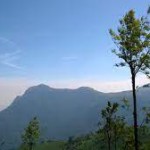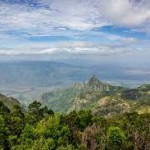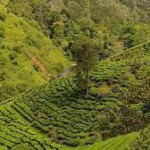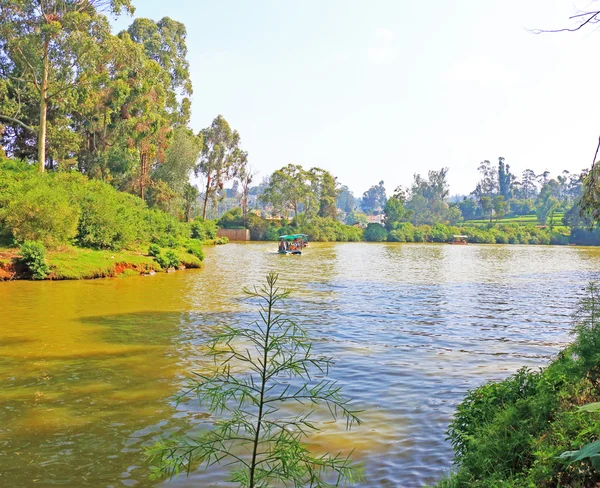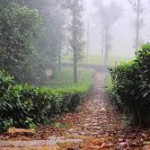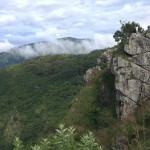Upgrade & Secure Your Future with DevOps, SRE, DevSecOps, MLOps!
We spend hours scrolling social media and waste money on things we forget, but won’t spend 30 minutes a day earning certifications that can change our lives.
Master in DevOps, SRE, DevSecOps & MLOps by DevOps School!
Learn from Guru Rajesh Kumar and double your salary in just one year.
| Nilgiris District |
| About: |
| Nilgiris District is situated on the beautiful Western Ghats. It is the most beautiful district in the state of Tamil Nadu. Nilgiris District is bordered by Coimbatore and Erode districts, and the neighboring states of Karnataka and Kerala. It has an area of 2,473 sq km, with cloud-kissing peaks, dense forests, rushing streams, undulating emerald green plains, breath-taking view of sudden drops, valleys and gladesOoty, also known as Uhagamandalam, is the headquarters. Nilgiris District includes 4 hill stations: Ooty, Coonoor, Kotagiri and Gudalur. It has a population of over 1 million. Agriculture is the main occupation of the people. Potato, paddy, ragi, samba wheat and barley are the main crops. Tea, coffee, cinchona, eucalyptus and geranium are also cultivated. Kurumbas, Todas, Badagas and Irulas are the scheduled tribes in Nilgiris District.The original discovery however,is attributed to J.C. Whish and N.W. Kindersley, working for the Madras Civil Service, who made a journey in 1819 and who reported back to their superiors that they had discovered “the existence of a tableland possessing a European climate.”The district usually receives rain both during South West Monsoon and North East Monsoon. The entire Gudalur and Pandalaur, Kundah Taluks and portion of Udhagamandalam Taluk receive rain by the South West Monsoon and some portion of Udhagamandalam Taluk and the entire Coonoor and Kotagiri Taluks are benefited by the rains of North East Monsoon. There are 16 rainfall registering stations in the district.The principal town of the area is Ootacamund, or Udhagamandalam, which is the district capital. The town also has several buildings which look very “British”, particularly the Churches. There is even a road junction known as Charing Cross. The other main towns in the Nilgiris are Coonoor, Kotagiri, Gudalur and Aruvankadu. The famous tourist spot in Coonoor are Lambsrock and Sims park. In Sims park, a “Fruit Show” is conducted during summer. All the varieties of fruit are displayed during that time. This park is situated on the way to Kotagiri.The first European resident of the hills was John Sullivan, the Collector of Coimbatore, who went up the same year and built himself a home. He also reported to the Madras Government the appropriateness of the climate; Europeans soon started settling down here or using the valley for summer stays. The complete valley became a summer resort. Later on the practice of moving the government to the hills during summer months also started.The Nilgiris District comprises six taluks viz., Udhagamandalam, Kundah, Coonoor, Kotagiri, Gudalur and Pandalur. These taluks are divided in to four Panchayat Unions viz., Udhagamandalam, Coonoor, Kotagiri and Gudalur besides two Municipalities, Wellington Contonment and Aruvankadu Township. The District consists of 56 Revenue Villages and 15 Revenue Firkas. There are two Revenue Divisional in this district viz., Coonoor and Gudalur. There are 35 Village Panchayat and 13 Town Panchayat in this districtTourism is an important source of revenue for the Nilgiris. The district is home to many beautiful hill stations popular with tourists who flock to them during Summer. Some of the popular hill stations are Udhagamandalam (district headquarters), Coonoor and Kothagiri. The Nilgiri Mountain Train or popularly known as the Toy Train is popular amongst tourists as the journey offers spectacular and breathtaking views of the hills and forests. Mudumalai National Park is popular with wildlife enthisiasts, campers and backpackers. The annual flower show organized by the Government of Tamil Nadu at the Botanical Garden in Ooty is a much awaited event every year, known for its grand display of roses. Nilgiris is renowned for its Eucalyptus oil and Tea. Tourists are also attracted to study the lifestyles of the various tribes living here and to visit the sprawling tea and vegetable plantations along the hill slopes. Other popular tourist destinations in the district are Pykara Waterfalls and Lake, Avalanche and Doddabetta peak. |
| Nilgiris is a mountainous district of Tamil Nadu bounded on North by Karnataka State, on the West by Coimbatore District, Erode District, South by Coimbatore District and Kerala State and on the East by Kerala State.In Nilgiris District the topography is rolling and steep. About 60% of the cultivable land falls under the slopes ranging from 16 to 35%. The Nilgiri or Blue Mountains are also the name given to a range of mountains panning across the states ofTamil Nadu and Kerala and are part of a larger mountain chain known as the Western Ghats. The highest point is the mountain of Doddabetta, with a height of 2,637 m. The district is mainly contained within this mountain range.The principal town of the area is Udagamandalam and is also the head quarter town of the district. In the town there are many buildings which look very “British”, in particular the Churches. There is even a road junction known as Charing Cross.The district offers good many numbers of tourist places owing to its natural and serene environment all around. |
| Location info: |
| Nilgiris District ,Tamil Nadu,India |
| Climate/Weather of Nilgiris District: |
| Winter:Max 21ºC, Min 5ºCSummer:Max 25ºC, Min 10ºC |
| History of Nilgiris District: |
| The Nilgiri hills have a history going back a good many centuries. It is not known why they were called the Blue Mountains. Several sources cite the reason as the smoky haze enveloping the area, while other sources say it is because of the kurunji flower, which blooms every twelve years giving the slopes a bluish tinge.It was originally tribal land and was occupied by the Todas around what is now the Ooty area, and by the Kotas around what is now the Kotagiri area. The Badagas appeared here much later from the Mysore Plateau, the unconfirmed date being 1550.Although the Nilgiri hills are mentioned in the Ramayana of Valmiki (estimated by Western scholars to have been recorded in the second century BCE), they remained all but undiscovered by Europeans until 1602. This was when the first European set foot into the jungles. A Portuguese priest going by the name of Ferreiri resolved to explore the hills and succeeded. He came upon a community of people calling themselves the “Toda.” This priest seems to have been the only European to have explored this area. The Europeans in India more or less seem to have ignored the ghats for some two hundred or more years. |
| Educational Institutions of Nilgiris District: |
| Arts & Science:Nehru Arts and Science College, Coimbatore R.V.S. College of Arts and Science, Coimbatore C.B.M. College Sakethapuri, Coimbatore Chikkanna Government Arts College, Coimbatore Emerald Heights College for Women, Udhagamandalam Govt. Arts College (Autonomous), Coimbatore Govt. Arts College, Udagamandalam Govt. Arts College, Udumalpet Kongunadu Arts and Science College, Coimbatore L.R.G. Govt. Arts College for Women, Tiruppur Nallamuthu Gounder Mahalingam College (Autonomous), Pollachi Nirmala College for Women, Coimbatore P.S.G. College of Arts and Science (Autonomous), Coimbatore P.S.G.R. Krishnamal College for Women, Coimbatore Providence College for Women, Udhagamandalam Sri G.V.G. Visalakshi College for Women (Autonomous), Udumalpet Sri Ramakrishna Mission Vidyalaya College of Arts and Science (Autonomous), Coimbatore Thavathiru Santhalinga Adigallar Arts and Science, Coimbatore A.J.K. College of Arts and Science, Coimbatore Angappa College of Arts and Science, Coimbatore Avinashilingam University for Women (Avinashilingam Institute for Home Science and Higher Education for Women), Coimbatore Bishop Ambrose College, Coimbatore C.M.S. College of Science and Commerce, Coimbatore C.S.I. Bishop Appasamy College of Arts and Science, Coimbatore Cherran College For Women, Tirupur Dr. G.R. Damodaran College of Science, Coimbatore Dr. N.G.P. Arts and Science College, Coimbatore Dr. R.V. Arts and Science College, Coimbatore Dr. S.N.S. Rajalakshmi College of Arts and Science, Coimbatore Hindusthan College of Arts and Science, Coimbatore K.G. College of Arts and Science, Coimbatore K.S.G. College of Arts and Science, Coimbatore Kairali Arts, Science and Commerce College, Coimbatore Karpagam University (Karpagam Arts and Science College), Coimbatore KAYPEEYES College of Arts and Science, Kotagiri Kovai Kalaimagal College of Arts and Science, Coimbatore Lakshmi Narayanan Visalakshi College of Arts and Science, Coimbatore Maharaja Arts and Science College, Coimbatore Michael Job College of Arts and Science for Women, Coimbatore Nehru College of Arts and Science, Tirupur Park’s College, Tirupur Pioneer College of Arts and Science, Coimbatore Rathinam College of Arts and Science, Coimbatore S.M.S. College of Arts and Science, Coimbatore S.N.R. Sons College, Coimbatore Sankara College of Science and Commerce, Coimbatore Shiri Kumaran College of Arts and Science, Coimbatore Shri Nehru Maha Vidyalaya College of Arts and Science, Coimbatore Sree Narayana Guru College, Coimbatore Sree Ramu College of Arts and Science, Coimbatore Sree Saraswathy Thyagaraja College, Pollachi Sri Gee College of Arts and Science, Coimbatore Sri Jayendra Saraswathy Maha Vidayalaya College of Arts and Science, Coimbatore Sri Krishna Arts and Science College, Coimbatore Sri Ramakrishna College of Arts and Science for Women, Coimbatore Sri Ramalinga Sowdambigai College of Science and Commerce, Coimbatore St. Joseph’s College for Women, Coimbatore TERF’s Academy College of Arts and Science, Coimbatore Texcity Arts and Science College, Coimbatore Tiruppur Kumaran College for Women, Tirupur V.L.B. Janakiammal College of Arts and Science, Coimbatore V.N. Krishnasamy Naidu College of Arts and Science for Women, Mettuppalayam Vidyasagar College of Arts and Science, Udumalpet |
| Langauge |
| Karur District ,Tamil Nadu,Idndia |
| Culture: |
| The Nilgiri District is a traditional, multi-cultural inclusive society with its people still retaining their roots to their native surrounding villages and its culture. The people of Coimbatore are known for their well-cultured manners, honesty and hospitality. |
| How to reach? |
| Nearest Railway Station:The Nilgiri Mountain Railway is now a UNESCO World Heritage Site. This provides services to many of the populated areas of the district including Coonoor, Wellington, Aruvankadu, Ketti, Lovedale and Ooty etc. |
| Nearest Airport:Nearest airport, Coimbatore is 98 kms away. Cochin airport is 250 kms away and Bangalore airport is 276 kms. |
| Road Transport:Nilgiri district is well connected by roads to all major towns and cities of Tamil Nadu and its neighboring states. The Nilgiri Ghat Roads link the district with the nearest cities in Tamil Nadu, Kerala and Karnataka. The Nagapattinam – Gudalur state Highway Passes through this district. |
| Tourist Attraction of Nilgiris District: |
| Green forest: Green forests and lovely gardens bound the temples of Nilgiris district. The serene and tranquil environment of the temples of Nilgiris district makes the temples even more beautiful and attractive. The Nilgiris District in Tamil Nadu is the name given to a range of mountains spread across the states of Tamil Nadu as well as Karnataka and Kerala. The temples of Nilgiris district are located amidst large mountain chain known as the Western Ghats. The highest point in this district is the mountain of Doddabetta, with a height of 2,637 m.Elk Hill Murugan Temple: Elk Hill Murugan Temple is one of the most important and honored temples of Nilgiris district. This temple is situated on Elk hill, which is one of the picturesque hills located at Ooty in Nilgiris District of Tamil Nadu. Dedicated to Lord Muruga, this temple of Nilgiris district is well maintained and reflects the heritage of the region. Devotees throng this temple during the months of January and February to witness the grand Thaipusam festival. They carry with them brass vessels filled with milk, which are to be offered to the lord. Some of them also carry the `kavadi` (palanquins), which is decorated with flowers, peacock feathers and brass bells and carry different forms of the main deity.Udhagamandalam, The “Queen of hill: Udhagamandalam, The “Queen of hill stations” is the capital of Nilgiri district. It is situated at an altitude of 2,240 meters above sea level. It is one of the best tourist resorts. Nilgiris is also called as “Blue Mountains”.It is here the world’s widest valley Ketti is found. Many breathtaking wild gardens in the Western Catchment provide trekking and hiking grounds for the nature lovers. Ooty and Udhagamandalam are various names of Ottakkalmandu which means “the village of a single stone”. An important point on the Mettupalayam-Ooty route is the pretty town of Coonoor; and on the Mysore-Ooty route, the high landmark is the Mudumalai Wildlife Sanctuary.Ooty Hill: The history of Ooty goes back to about 800 years when it was ruled by the Hoysalas. Though much is not known of its early phase, there is mention of the place being ruled by Vishnu Vardhana, the Hoysala king, from AD 1104 to 1141. The local tribe called Todas were one of the earliest inhabitants of Ooty. Ooty also finds mention in the writing of Jacome Ferico, the first European to visit this place in the year 1603. It was developed into a hill station with the initiative of John Sullivan, a British collector. A government house was built and a typical British lifestyle developed with the setting up of cottages and clubs, with facilities for tennis, golf, and horse riding.Raj Bhavan: Built by the Duke of Buckingham and Chandos in 1877 when Governor of Madras, in the style of his family home at Stowe. The Government House, now the Raj Bhavan, is superbly positioned on the Doddabetta Ridge to the south-east of Ooty and is approached through the Botanical Gardens. The grounds are very well maintained and open to visitors, though the building is not.Palaces: Maharajas and nawabs built their summer palaces and mansions. Many have been turned into hotels. Arranmore Palace built by the Maharaja of Jodhpur and now a government guest house, Tamizhagam. Open to visitors.St Stephen’s Church: Northwest of Charing Cross, the small gothic-style St. Stephen’s Church was one of Ooty’s first colonial structures, built in the 1820s on the site of a Toda temple. Other than this, red-brick, a quasi-gothic structure – Civil Court, and the Club (dates from1830) are also interesting to see.Kandal Cross: 3 km west of the railway station is a Roman Catholic shrine considered as the `Jerusalem of the East’. The cross erected here is a relic of the True Cross brought to India by an Apostolic delegate.Government Museum: It was set up in 1989, with a view to provide educational benefits of the museum to the residing and visiting population of Nilgiris. The museum has items of tribal objects, district’s ecological details and representative sculptural arts and crafts of Tamilnadu. Admission is free and timings are 10.00 a.m. to 1.00 p.m. and 2.00 p.m. to 5.00 p.m. It is closed on Friday, second Saturdays and National Holidays.Botanical Garden: A little way northwest of Charing Cross, the Botanical Garden (daily 8 am – 6.30 pm.) laid in 1847 by gardeners from London’s Kew Gardens, consists of twenty hectares of immaculate lawns, lily ponds and beds, with over thousand varieties of shrubs, flowers and trees. The Annual flower show is held here every year during the month of May. There is a wood hut at the top of the garden from where a panoramic view of Ooty can be had.Aquarium: It is close to bus station and is run by Dept. of Fisheries. In this aquarium, department rears exotic fish varieties. The office issues license to fish in the nearby waters such as Ooty lake, Sandynallah, Kundha, Pykara Reservoir, T.R. Bazaar and Wellington Lake. The license is only for angling with Rod and linc.Golf: Golf Club’s 18 hole Golf course is located at a height of 7400 ft. The Golf links are laid out over an area of 193 acres of the Ooty Wenlock Downs.Trekking: A number of Trek routes have been identified. For participation, the tourist officer Ooty may be contacted.Angling: Good trout, carp and mixed water fishing is possible in various streams and lakes in the Nilgiris. Fishing license for a fee is issued by the Asst. Director of fisheries, Fish dale, Ooty (near bus station)Horse Riding: Enjoy horseback riding by hiring a horse at the Tourist Cafe on the north side of the lake.Ooty Race: Every year, from April 15th the race begins and lasts till end of May.Horse Races: They are held at the racecourse during the monsoon season.Water Sports: Every year during summer festival(May) Boat Races are conducted at Ooty lake.Yoga: Rajayoga Meditation center is located at 88, Victoria hall, Ettines Road, Ooty.Ooty Lake: It was constructed between 1823 and 1825 through the initiative of the collector, Mr. John Sullivan, as an irrigation tank. The lake is about 2.5 km long and between 100 and 140 m wide.Walks: There are a number of long walks and some superb views over Ooty and the Nilgiris. Kotagiri Pass is an excellent starting point for treks over and along the wooded hill crests and has great views down the Nilgiris northern slopes. About 3 km east of this pass is the highest peak in Tamil Nadu, Doddabetta (2,623 m), from where Coonoor, Mettupalayam and, on a clear day, even Mysore are visible. Doddabetta is 10 km from Ooty.Mukuruthi Peak and Mukuruthi National Park: 36 km from Ooty, is Mukuruthi lake, which is surrounded by high hills and is 6 km long. The name is derived from `muku’ (nose) and `ardha’ (half) suggesting a severed nose for shape of the peak. The Electricity Department and Nilgiris Game Association Bungalows are on the south side of the lake. Enjoy boating and fishing is permitted. The Mukurthi National Park is located on the South Eastern corner of the Nilgiris Plateau. The area contains a viable population of Nilgiri Tahr.Avalanche: 24 km from Ooty. The `avalanche’ in 1823 gave the valley it’s name. Excellent for walking and superb scenery. Forest Department Guest House is available for accommodation. Avalanche Top is 4 km from bungalow.Pykara: 19 km from Ooty. The river has a dam and power plant. There is a breathtaking scenery. The falls, about 6 km from the bridge on the main road, are best in July, but they are also worth visiting from August to December. There is a forest rest House at Pykara. A boat house by the Pykara falls and Dam is added attractions to the tourists.Kalhatti Falls: 14 km from Ooty, the picturesque waterfalls come down a 36 m drop. A popular spot for picnics and treksGlenmorgan: 17 km from Ooty, is a beautiful countryside with tea and eucalyptus plantations, undisturbed sholas and fine views is ideal for drives and picnics.Kotagiri: 29 km form Ooty, this little hill station offers a quiet retreat in beautiful surroundings. it’s attractions include the Kodanad view point and the Rangaswamy Pillar and Peak. |
| Hotels/Lodge/Accommodation in Nilgiris District: |
| Hotel Nahar Niligirs:52-A, Charring Cross, Ooty, Tamil Nadu,Ph:0423 2443685The Nilgiri Woodlands Hotel:Race Course Road, Udagamandalam, Ootacamund, Tamil Nadu,Ph:0423 2442451Nilgiris Nest:Coimbatore, Coimbatore, Tamil NaduPh:0422 2217247 |
| Links: |
| http://nilgiribizinfo.in/aboutNilgiris.html http://www.liveindia.com/kerala/ooty.html |
about:blankFooGallerySelect the gallery you want to insert.Select Gallery
Yoast SEO
Toggle panel: Yoast SEO
Google preview
Preview as:Mobile resultDesktop resultUrl preview:www.holidaylandmark.com › blog › nilgiris-districtSEO title preview:Nilgiris District – Holiday Landmark BlogMeta description preview:Feb 12, 2022 - Please provide a meta description by editing the snippet below. If you don’t, Google will try to find a relevant part of your post to show in the search results.SEO titleInsert variableTitle Page Separator Site title SlugMeta descriptionInsert variable
